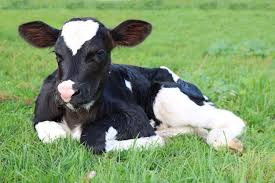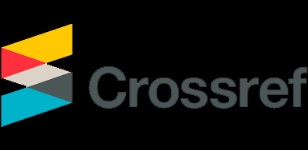Effect of caustic paste, direct fire alone or combined with flunixin meglumine during disbudding of holstein calves on physiological and behavioral parameters
DOI:
https://doi.org/10.19137/cienvet202426204Keywords:
Dehorning, Dairy farm, Pain reliefAbstract
The aim of this study was to determine the effects of different disbudding methodologies in Holstein calves on behavioral and physiological parameters related to pain. Twenty-five calves under artificial rearing with an average of 22 ± 3 days of age and 48.9 ± 8.8 kg of live weight were randomly assigned to three treatments: Tc, control disbudding with a thermal method using hot iron, Ta: disbudding with hot iron + flunixin meglumine (2.2 mg/kg intramuscular, 20 minutes prior to the procedure and Tp: disbudding using caustic paste. After disbudding and for 30 minutes, the number of times that each animal performed the following behaviors was recorded: Shakes head, scratches the head, rubs the head, presses the head, shakes the body, grooms, jumps, runs and bleats. Then the heart and respiratory rates were measured. In the Tp group the frequencies of shaking the head (p < 0. 0003), scratching the head (p< 0.0009), rubbing the head (p<0.0011), jumping (p<0.0005) and running (p<0.0002), were significantly higher than in the groups Ta and Tc. The heart rate of the Tp calves was significantly (p< 0.0013) higher (125.5 ± 13.5) than that of Ta (85.3 ± 24.2) and Tc (87 .0 ±18.8), as well as the respiratory rate, resulting in Tp (70.6 ±8.6) higher (p<0.02) than Ta (37.7 ± 20.9) and Tc (40.0 ± 21.2). The results showed that the use of caustic paste for disbudding has greater negative implications in terms of behavioral and physiological responses with respect to the thermal method and that under the conditions of this trial the intramuscular administration of flunixin meglumine did not show beneficial effects.
Downloads
References
Stafford KJ, Mellor DJ. Dehorning and disbudding distress and its alleviation in calves Vet. J., 2005; 169: 337-349.
Stock ML, Baldridge SL, Griffin D, Coetzee JF. Bovine dehorning: assessing pain and providing analgesic management Vet. Clin. N. Am.: Food Anim. Pract., 2013; 29: 103-133.
Knierim UI, Nora I, Roth BA. To be or not to be horned ‐ consequences in cattle. Livest. Sci., 2015;1 79: 29-37. doi: 10.1016/J.LIVSCI.2015.05.014
Neely CD, Thomson DU, Kerr CA Reinhardt CD. Effects of three dehorning techniques on behavior and wound healing in feedlot cattle. J. Anim. Sci., 2014; 92: 2225-2229. doi: 10.2527/jas.2013-7424
Adcock SJJ, Tucker CB. The effect of disbudding age on healing and pain sensitivity in dairy calves. J. Dairy Sci., 2018; 101: 10361-10373. doi: 10.3168/jds.2018-14987
Gottardo F, Nalon E, Contiero B, Normando S, Dalvit P, Cozzi G. The dehorning of dairy calves: practices and opinions of 639 farmers. J. Dairy Sci. 2011; 94(11): 5724-34. doi: 10.3168/jds.2011-4443
Vasseur EJ, Borderas F, Cue RI, Lefebvre D, Pellerin D, Rushen J, Wade KM, de Passillé AM. A survey of dairy calf management practices in Canada that impact animal welfare. J. Dairy Sci., 2010; 93(1): 307-1315. doi: 10.3168/jds.2009-2429
Saraceni J, Winder CB, Renaud DL, Miltenburg C, Nelson E, Van Os JMC. Disbudding and dehorning practices for preweaned dairy calves by farmers in Wisconsin, USA. J. Dairy Sci., 2021; 104(11): 11995-12008. doi: 10.3168/jds.2021-20411
Cozzi G, Gottardo F, Brscic M, Contiero B, Irrgang N, Knierim U, Pentelescu O, Windig JJ, Mirabito L, Kling Eveillard F, Dockes AC, Veissier I, Velarde A, Fuentes C, Dalmau A, Winckler C. Dehorning of cattle in the EU Member States: A quantitative survey of the current practices. Livest. Sci., 2015; 179: 4-11. doi: 10.1016/j.livsci.2015.05.011
Vickers J, Niel L, Kiehlbauch LM, Weary DM. Calf response to caustic paste and hot-iron dehorning using sedation with and without local anesthetic J Dairy Sci., 2005; 88: 1454- 1459.
Taschke AC, Folsch DW. Ethological, physiological and histological aspects of pain and stress in cattle when being dehorned. Tierarztl. Prax., 1997; 25: 9-27.
Anderson DE, Muir WW. Pain management in cattle Vet. Clin. N. Am.: Food Anim. Pract., 2005; 21: 623-635.
Weary DM, Niel L, Flower FC, Fraser D. Identifying and preventing pain in animals. Appl. Anim. Behav. Sci., 2006; 100: 64-76.
Saraceni J, Winder CB, Renaud DL, Miltenburg C, Nelson E, Van Os JMC. Disbudding and dehorning practices for preweaned dairy calves by farmers in Wisconsin, USA. J. Dairy Sci., 2021; 104: 11995-12008. doi: 10.3168/jds.2021-20411
Lindén J, Taponen S, Talvitie V, Leppävuori E, Hänninen L. Histopathological findings in a pilot study of dairy calves disbudded with hot cauterization or caustic paste. J. Comp. Pathol., 2023: 201: 118-122.
Stafford KJ, Mellor DJ. Addressing the pain associated with disbudding and dehorning in cattle. Appl. Anim. Behav. Sci., 2011: 135: 226-231. doi: 10.1016/j.applanim.2011.10.018
Winder CB, LeBlanc SJ, Haley DB, Lissemore KD, Godkin MA, Duffield TF. Clinical trial of local anesthetic protocols for acute pain associated with caustic paste disbudding in dairy calves. J. Dairy Sci., 2017; 100: 6429-6441. doi: 10.3168/jds.2017-12724
Heinrich A, Duffield T, Lissemore K, Millman S. The effect of meloxicam on behavior and pain sensitivity of dairy calves following cautery dehorning with a local anesthetic. J. Dairy Sci. 2010: 93: 2450–2457.
Anil SS, Anil L, Deen, J. Challenges of pain assessment in domestic animals. JAVMA. 2002; 220(3): 313-319.
Clark-Price S. 2014. Nonsteroidal anti-inflammatory drugs and corticosteroids. In: Egger CM, Love L, Doherty T, eds. Pain management in veterinary practice. Iowa: Wiley Blackwell. p 69-77.
Stock ML, Kleinhenz MD, Mazloom R, Jaberi-Douraki M, Barth LA, Van Engen NK, Voris EA, Wang C, Coetzee JF. A field trial comparing four oral nonsteroidal anti-inflammatory drugs on controlling cautery dehorning pain and stress in calves. Transl Anim Sci., 2021;5(2): txab041. doi: 10.1093/tas/txab041.
Huber J, Arnholdt T, Möstl E, Gelfert C-C, Drillich M. Pain management with flunixin meglumine at dehorning of calves. J. Dairy Sci., 2013; 96: 132-140. doi: 10.3168/jds.2012-5483.
Heinrich A, Duffield T, Lissemore K, Millman S. The effect of meloxicam on behavior and pain sensitivity of dairy calves following cautery dehorning with a local anesthetic. J. Dairy Sci., 2010; 93: 2450–2457.
Martínez GM, Suarez VH, Hempstead M, Alfaro E, Colque Caro L, Alfaro J. Effect of funixin meglumine on pain‐related behaviours following cautery disbudding in dairy goat kids. Vet. Res. Commun., 2023; 47(1): 159-165. doi: 10.1007/s11259-022-09938-z
Faulkner PM, Weary, DM. Reducing Pain after Dehorning in Dairy Calves J. Dairy Sci., 2000; 83: 2037-2041.
Lindén J, Taponen S, Talvitie V, Leppävuori E, Hänninen L. Histopathological findings in a pilot study of dairy calves disbudded with hot cauterization or caustic paste. J. Comp. Pathol. 2023; 201: 118-122. doi: 10.1016/j.jcpa.2023.01.003
Advenier A-S, Dorandeu A, Charlier P, Lorin de la Grandmaison G. Microscopic acute lesions after caustic exposure. Forensic. Sci. Int., 2014; 234:576. doi: 10.1016/j.forsciint.2013.10.039.
Stewart M, Stookey JM, Stafford KJ, Tucker CB, Rogers AR, Dowling SK, Verkerk GA, Schaefer AL, Webster JR. Effects of local anesthetic and a nonsteroidal antiinflammatory drug on pain responses of dairy calves to hot-iron dehorning. J. Dairy Sci., 2009; 92:1512-1519. doi: 10.3168/jds.2008-1578
Petrie NJ, Mellor, DJ, Stafford KJ., Bruce RA, WARD, RN. Cortisol responses of calves to two methods of disbudding used with or without local anaesthetic. NZVJ, 1996; 44: 9– 14.
Winder CB, Miltenburg CL, Sargeant JM, LeBlanc SJ, Haley DB, Lissemore KD, Godkin MA,
Duffield TF. Effects of local anesthetic or systemic analgesia on pain associated with cautery disbudding in calves: A systematic review and meta-analysis. J Dairy Sci. 2018; 101(6): 5411–5427.
Huxley J. 2020. Systematic Review: Analgesia for Calf Disbudding. A Research Review™. Disponible en: https://www.animalhealthreview.co.nz/getmedia/2f8e8190-cdba43da-a72c9d48d8429e5e/Study-Review-Cautery Disbuddding-inCalves.pdf.aspx?ext=.pdf (En línea 22/02/2024).
Kleinhenz MD, Van Engen NK, Gorden PJ, Ji J, Walsh P, Coetzee JF. Effects of transdermal flunixin meglumine on pain biomarkers at dehorning in calves. J. Anim. Sci., 2017; 95: 1993-2000. doi: 10.2527/jas2016.1138
Silva B, Henklein A, Marques R, Oliveira P, Leite S, Novo S, Baccili C, Reis J, Gomes V. Vital Parameters of HolsteinCalves from Birth to Weaning. Rev. Bras. De Med. Vet., 2016; 38: 299-304.
Agradecimientos:
Los autores agradecen a Ramón Mirabal y a los operarios del establecimiento lechero por brindarnos sus instalaciones y animales para poder llevar a cabo la investigación. También quieren agradecer su invalorable ayuda para garantizar que esta experiencia pueda haberse realizado a Emilio Alfaro y José Alfaro.
Declaración de conflicto de intereses:
No existen conflictos de intereses, tanto en lo concerniente a relaciones financieras ya que el estudio fue financiado por el INTA en su totalidad como a relaciones personales o de otro tipo con otras personas u organizaciones que pudieran influir de manera inapropiada en el presente trabajo.
Contribuciones de autor/a/es/as CRediT:
Martínez GM: Conceptualización del proyecto, supervisión y coordinación del trabajo de investigación, análisis de datos, recolección del material, redacción del trabajo. Suarez VH: Conceptualización del proyecto, gestión y coordinación del trabajo de investigación, análisis de datos, redacción del trabajo.

Downloads
Published
How to Cite
Issue
Section
License
Copyright (c) 2024 Gabriela Marcela Martinez, Victor Humberto Suarez

This work is licensed under a Creative Commons Attribution-NonCommercial-ShareAlike 4.0 International License.
Al momento de enviar sus contribuciones, los colaboradores deberán declarar , de manera fehaciente, que poseen el permiso del archivo o repositorio donde se obtuvieron los documentos que se anexan al trabajo, cualquiera sea su formato (manuscritos inéditos, imágenes, archivos audiovisuales, etc.), permiso que los autoriza a publicarlos y reproducirlos, liberando a la revista y sus editores de toda responsabilidad o reclamo de terceros , los autores deben adherir a la licencia Creative Commons denominada “Atribución - No Comercial CC BY-NC-SA”, mediante la cual el autor permite copiar, reproducir, distribuir, comunicar públicamente la obra y generar obras derivadas, siempre y cuando se cite y reconozca al autor original. No se permite, sin embargo, utilizar la obra con fines comerciales.







.jpg)

4.png)


7.png)



